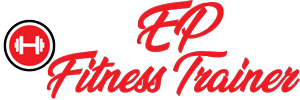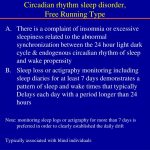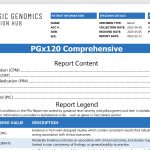Let’s be honest. The modern work culture often feels like a badge of honor for being busy. You know the drill: back-to-back meetings, an inbox that never empties, and that persistent, low-grade hum of stress that follows you home. We’re so focused on optimizing for output that we forget the most critical component of sustained performance: recovery.
Think of your energy like a smartphone battery. You can’t just keep draining it and expect a quick 10-minute charge to get you through the next week. A recovery-focused routine is like a full, overnight charge—it’s what allows the system to function properly, prevents long-term damage, and honestly, just makes the whole experience a lot smoother.
Why “Just Powering Through” is a Terrible Long-Term Strategy
Sure, you can push through fatigue for a while. But chronic stress without adequate recovery leads straight to burnout. It’s not just feeling tired. It’s emotional exhaustion, cynicism, and a reduced sense of accomplishment. Your cognitive function dips—creativity, problem-solving, and memory are some of the first things to go. It’s like trying to run a high-performance engine on low-grade fuel; eventually, things start to break down.
Building Your Recovery Arsenal: A Daily Guide
This isn’t about adding more to your to-do list. It’s about weaving small, intentional acts of recovery into the fabric of your day. Let’s break it down.
The Morning Reboot (It’s Not Just About Coffee)
Your morning routine sets the tone. Instead of jolting your system awake with a panic-induced scroll through emails, try this.
- Hydrate Before You Caffeinate: Drink a large glass of water. Your brain and body are dehydrated after a night’s sleep. This simple act kickstarts your system more gently than a caffeine bomb.
- 5 Minutes of “Why”: This could be meditation, journaling, or just staring out the window with purpose. The goal is to connect with your intention for the day before the world starts shouting its demands at you.
- Move Your Body, However Briefly: We’re not talking about a full hour at the gym. A 10-minute walk, some gentle stretching, or a few sun salutations. The point is to signal to your body that it’s time to wake up and get blood flowing.
The Workday Pit Stops
The eight-hour workday is a myth. High-focus work in long, uninterrupted blocks is a recipe for depletion. Here’s how to build in pit stops.
Embrace the Micro-break. Seriously. Every 60-90 minutes, step away from your screen for just 2-5 minutes. Look out a window at something distant. Walk to get a glass of water. Do a few neck rolls. These tiny resets prevent the buildup of mental and physical tension.
Master the “Artful Lunch.” Eating at your desk while working is not multitasking; it’s half-doing two things poorly. Step away. Chew your food slowly. If you can, eat somewhere other than your desk. This 30-minute disconnect is a powerful circuit breaker.
And here’s a simple framework for your energy management:
| Time of Day | High-Intensity Work | Recovery Activity |
| Morning (9-11 AM) | Deep focus work, strategic planning | Post-focus micro-break (stretch, hydrate) |
| Midday (1-3 PM) | Lighter tasks, meetings, admin | Artful lunch break (no screens!) |
| Late Afternoon (3-5 PM) | Creative tasks, collaboration | Energy-boosting walk or breathing exercises |
The Evening Wind-Down: The Most Important Transition
You can’t go from 60 to 0. Your brain needs a runway to land. A hard stop on work followed by immediate scrolling or Netflix just keeps your nervous system in a state of high alert. The wind-down is about consciously shifting gears.
- Create a Shutdown Ritual: Spend 5 minutes at the end of your workday reviewing what you accomplished and writing down your top 3 priorities for tomorrow. This “closes the loop” and prevents work thoughts from intruding all evening.
- Get Bored: Allow yourself to feel a little understimulated. This is when your brain does its best consolidating and problem-solving. Stare at a wall. Sit on your porch. It feels weird at first, but it’s incredibly restorative.
- Dim the Lights & Screens: An hour before bed, switch to lamps and use blue light filters on your devices. Light is the primary regulator of your sleep-wake cycle.
Beyond the Daily Grind: The Weekly Recalibration
Daily routines are vital, but you also need a longer period of recovery—a weekly reset. This is your secret weapon for preventing the slow creep of burnout.
- Schedule a “Worry Window”: Take 30 minutes on a Friday afternoon or Sunday evening to dump all your work-related anxieties and to-dos onto a piece of paper. Get it out of your head and onto something you can close and put away until Monday.
- Engage in “Serious Play”: Do something that is deeply engrossing and has no productive outcome. A hobby. A sport. Building something. Playing music. This isn’t about being good at it; it’s about losing yourself in the flow of an activity just for the sake of it.
- Connect with Someone Who Fills Your Cup: Have a real, screen-free conversation with a friend or family member. Laugh. Share a meal. Human connection is a powerful antidote to work-induced stress.
The Final Word: Recovery is a Skill, Not an Event
Building these recovery-focused routines isn’t about achieving perfection. Some days you’ll nail it; other days, well, you’ll just survive. And that’s okay. The goal is progress, not perfection.
The most successful, resilient people aren’t the ones who never get tired. They’re the ones who have learned to listen to their mind and body, and who respect their need to recharge. They treat recovery with the same importance as a critical business meeting. Because in the end, your capacity to recover determines your capacity to achieve. So, what’s one small recovery ritual you can start building today?











